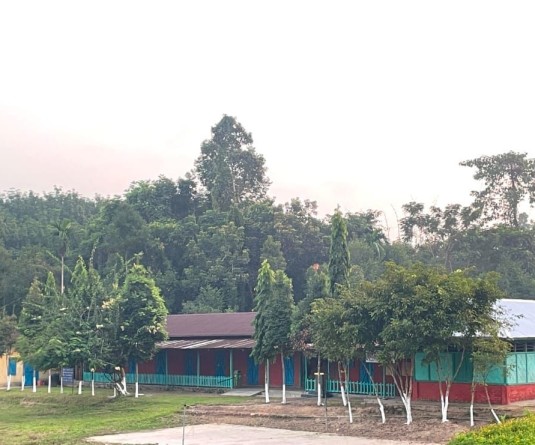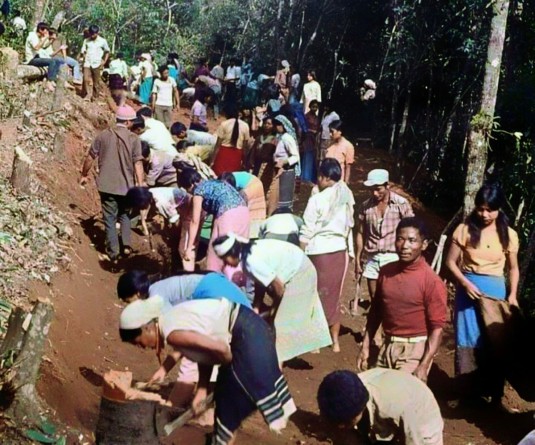Misty Khanmoi village. In the old days, tribes used to build fortresses around their villages, a practice that is no longer practiced.
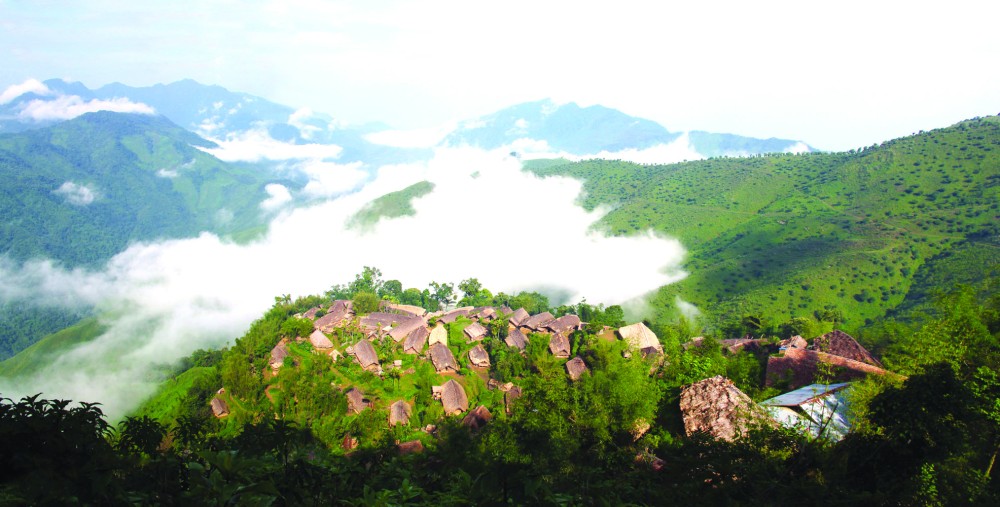
Akangchila Longchar
Morung Express Feature
Dimapur | January 22
“In a touching moment, an old warrior of the Laonyu cultural troupe (a kindred clan of the Konyak) in a dance-song during the Mon Road Show is said to have appealed to the dignitaries and people on the other side of the border to spare a thought about the plight of Nagas in Myanmar. The old man in his song said Nagas were born of one mother, yet they have been separated against their will”. I remember reading this at some website last year, and like the so many Nagas living in India failed to understand what the fuss was all about. Until I chanced about a collection of more than 100 colored images depicting Myanmar Nagas published by East Wind, a media house based in Delhi.

The hundred thousand Nagas living in Myanmar (Burma) mainly because of extreme poverty and almost inaccessible transportation and telecommunications have little contact with the outside world, and with the Nagas living across the border in India. What East Wind has strived through this compilation is to provide a rare peek into the very much hidden Nagas living in Myanmar (Burma) tucked away in a remote place. East Wind has managed to make the Coffee Table Book not superficial but offers a reality and evidence based information in the form of photo documentation, and not so much on how rich and colorful and rich Nagas are culturally but more on how to bring help and assistance to improve their situation, including access to communications, health care and education.
The Coffee Table Book is a stunning pictorial record of one of the most isolated, least visited, poorly represented and severely under developed ethnic people in Burma and in the region.
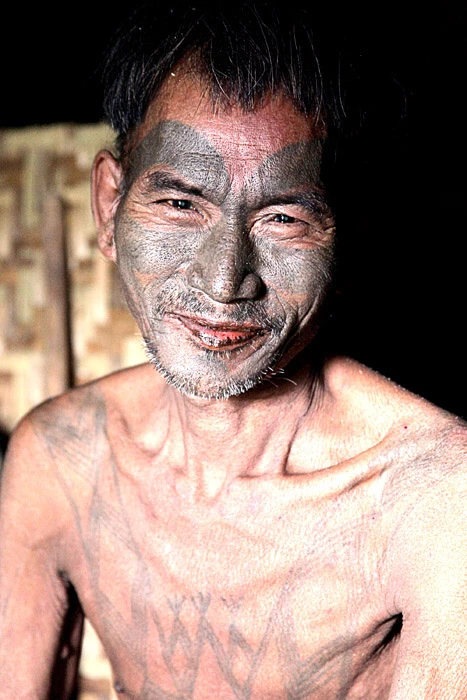
The Chief Minister of Nagaland Neiphiu Rio, who apparently has extended his unconditional support in making this book, writes the foreword of the book. After a grueling six months of exploring the region, East Wind stated that there is no information on the actual living conditions, the day to day livelihood, needs and concerns, hopes and aspiration, limitations and difficulties and most importantly no factual data about the people, the land resources and administration arrangements without which development plans and assistance cannot be developed. Communications, both transportation and telecommunications, is extremely poor and almost inaccessible.
The book hence provides an insight into the real condition of the Burma Nagas. With the only exposure the Burma Nagas has with the global community is during the New Year Festival held every year in the month of January. What little documentation available is mostly about the famous festival and what it offers and sadly even these limited information are poorly presented both in terms of facts and quality. So it is no surprise that most tourist attraction materials like maps, brochures, flyers and other advertisements about Burma are filled with colorful photos of the traditionally attired Nagas.
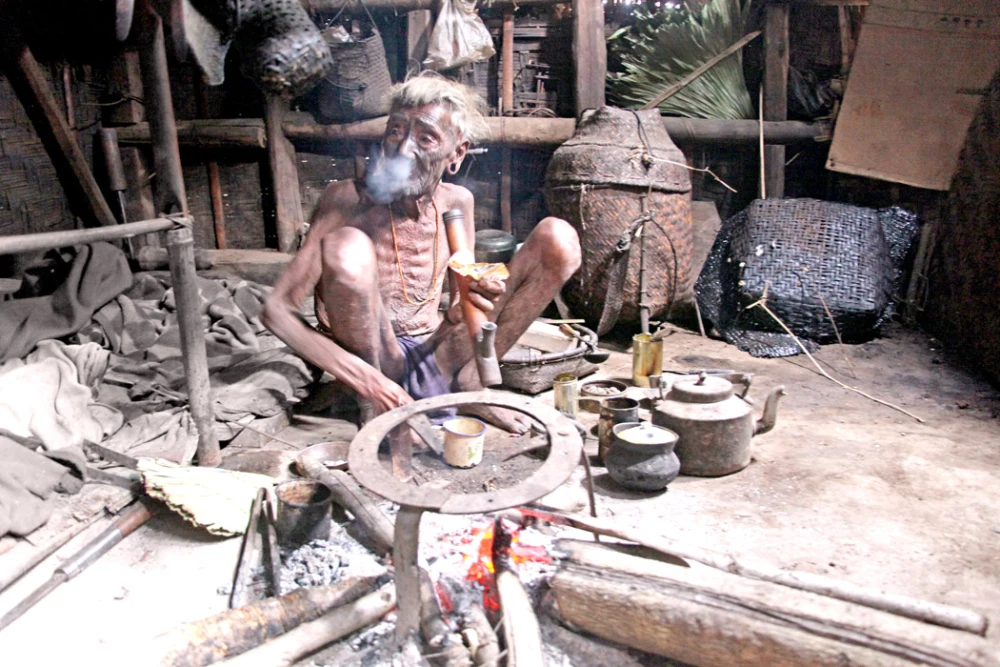
A highly recommended acquisition, be it for media persons, travelers, art enthusiasts and culture vultures. This book is a must-read for anybody who has an interest in Nagas, whether living in India or Myanmar. I recommend that everybody who plans to visit buy this book before they go. This book will prepare them for a real discovery. With art direction from Kuku Christina and Girish Mason, the book is a visual treat that couples heart wrenching and real depiction of the real face of Nagas living in Myanmar. Arhe supplied the text and video for this project.
N. Arhe meets The Morung Express: After completing her matriculation in Nagaland, she journeyed on to Mumbai, Chandigarh and then later studied at the London School of Journalism. In May 2002, she established “East Wind” – A bi monthly magazine focused on the Northeast region of India based in New Delhi.
Born in Kohima, Journalist/Editor, Arhe has been awarded the Young Women Achiever Award in 2007 from the National Women Network at Delhi, and in 2008 got scholarship from the parent body International Women Network to attend the Women Leadership Training programme held at Prague, Czech Republic. Besides running the publishing house, in 2009-2010, she has also initiated and successfully completed the first Street Kitchen Project, whereby every weekend hundreds of street children working at traffic lights were fed and taught basic education and personal hygiene. The project was supported by France based Trust, Mustard seed.
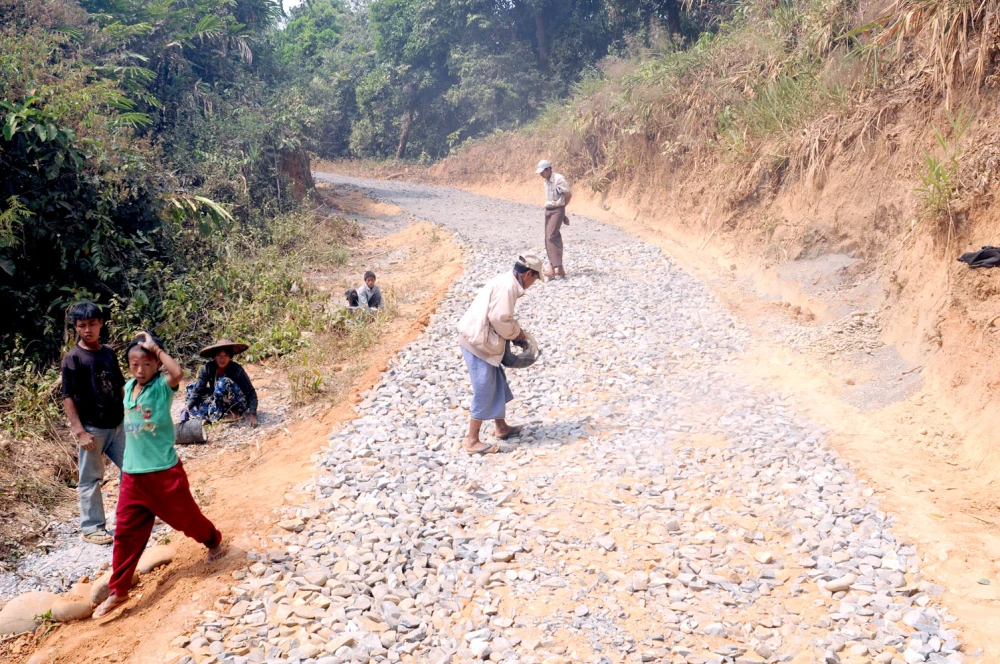
On the book, Arhe stated we have tried our best to present the actual reality of the people and their living conditions - the way it is”. She reflects that the trips made to Naga inhabited Myanmar areas were adventurous and definitely a once-in-a-lifetime experience. She also furnishes that in the beginning, people were very suspicious of their presence while they were traveling. She allots this to the fact that people were accustomed to having visitors only during the New Year festival. However, one advantage that she and team had was the fact that some of them could speak Nagamese which came very handy, for in every village they met at least one youth who had come to study theology in Nagaland.
Arhe further furnishes that the condition of the people in villages were in deplorable conditions and in many villages’ women still were not covered properly and families still lived with pigs and chicken in the same huts. “Some villages that we visited could well be a good 40 years behind our Nagaland,” Arhe stated.
There are few townships such as Khamti, Lahe and Layshi which is just beginning to be exposed to modern world. With new road connections, getting electricity for four hours a day and have a public phone booth that opens at specific time of the day for couple of hours. But there are the rest of the Nagas areas where modernity has not touched the people in any way. Village folks still walk for days and hours to commute from one village to another. But, the glimmer of hope is that, in the last few years’ missionaries from Nagaland have started visiting them, and the presence of one Church in every village has sort of brought about some changes and awareness in the life of the village folks. In Khamoi village, which is probably the closest village from Lungwa, Mon district, we came across a school, which was set up with the help of Nagaland Baptist Church council. We also had an interesting conversation with a volunteered teacher who told us how challenging it is to convince parents to send their children to school. For most of them would rather have their children help them in the fields than waste their day sitting in a class room. Such is their mindset”
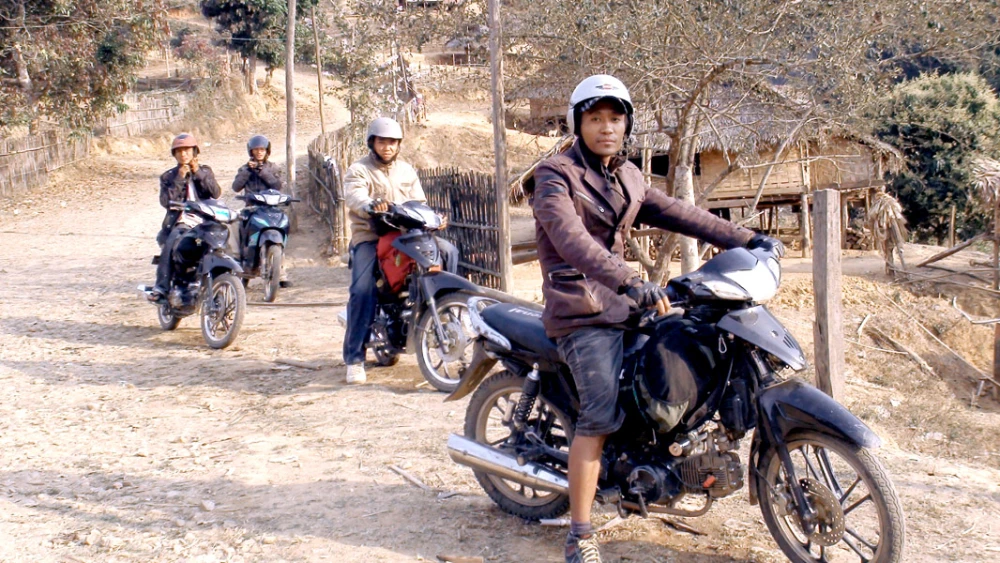
the villages.
“Without trying to sound patronizing, we also came across people who said that it is only in the recent past, after the present government has come into power and with personal interest of our Chief Minister that the place has seen a glimmer of hope and a new found affection for the rest of the Naga family on the other side of the border,” she said.
The harshest reality, Arhe says of the experience was the realization that it’s a no man’s land; it’s like going to another world. There were also moments of utter sadness watching young children and village elders oblivious of the world outside their own. On the query about how Nagas living in Myanmar view Nagas living in India, she opined, “Some of them are not even sure if they are living in India or Myanmar. There are many areas which are closer to India than to the rest of Myanmar, so they buy their groceries from Mon, Kiphire or other bordering areas. Also, another interesting point is that, even though they live in Myanmar, there are very few who can speak or understand Burmese.
Personally Arhe feels that she is more drawn to the children and that the main focus should be on children. “They have no access to health care services whatsoever. For many of them the nearest hospital still means a good few hours of walking, with more than half of the Nagas villages still with no road connectivity it was heart wrenching to see a large number of children severely malnourished with distended abdomen, clearly indication of intestinal worms. These children urgently need basic health care services,” she said.
Arhe shares that a lot of people asked her to compare Myanmar Nagas with their counterparts. To this she said, whatever backward areas we think we have in Nagaland, take those villages and those in Myanmar. It’s a difference of at least couple of decades, she said. It was a reality check and completely back to basics moment for me and the team, she said.
On enquiring about the target audience for the book, She said, their main target is Schools/Institutions’ that would want to keep the Coffee Table Book in their libraries. “It’s important to keep it for history and also for future reference” This she said was her true intent.
Looking ahead, Arhe reveals that there have already been offers to do more photo book and is most likely to put out one more this year.
On her parting shot she said, “With easier access to Naga areas, anyone with an interest in history, stories or with a spirit of adventure should visit these Naga villages in Myanmar. There are so many stories that have never had the chance to be told or heard, this is the right time to do so.” she concluded.
About the photographers:
Girish Mason and Kuku are Delhi-based photographers, whose work has appeared in many leading magazines across India, such as Vogue, Marie Claire, Femina, Good Homes, Outlook etc. To know more about Girish Mason work visit: girishmason.com.
Anyone interested to own a copy of “Myanmar Nagas- As it is. A photo documentation of the realities, challenges, and opportunities facing Myanmar (Burma) Nagas today” could leave name, address and phone number to morung@gmail.com, which will be redirected to East Wind at Delhi. The Coffee Table Book is priced at Rs. 1,500.


